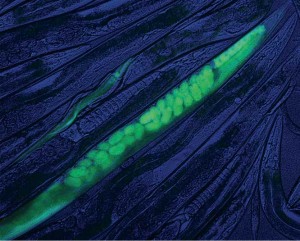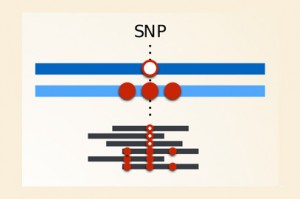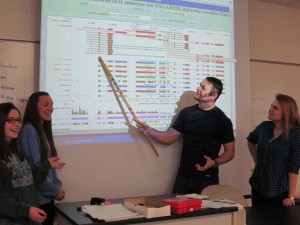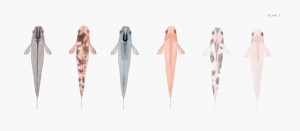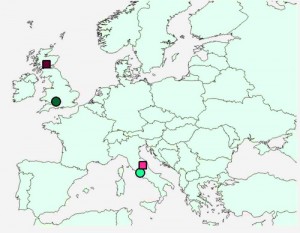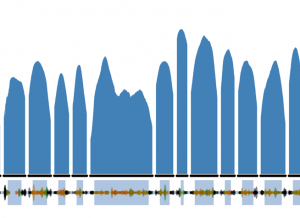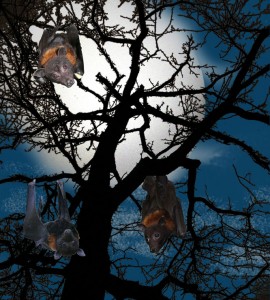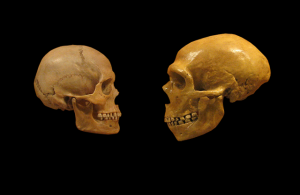Enter your address to receive notifications about new posts to your email.
Articles tagged Genomics
(79 results)
-
Worm CRISPR Workshop at the International C. elegans Meeting
Technical tips and progress on worm CRISPR/Cas9 genome engineering Today’s guest post was contributed by Mike Boxem, Daniel Dickinson, and Alexandre Paix. Mike Boxem is a group leader at Utrecht University. His interests include technology development, systems biology, and cell polarity. Daniel Dickinson is a postdoctoral research fellow at the University of North Carolina. His interests include…
-
A genomic balancing act
Allelic expression in the mouse genome is surprisingly unbalanced, according to new research published in the June issue of GENETICS. The factors that determine how a gene is expressed in a given cell are complex. After all, every mammalian cell contains two copies of each gene, and both versions of that gene, called alleles, play…
-
Turning spit and data into treasure
By the time President Obama announced the Precision Medicine Initiative in January 2015, the Genetic Epidemiology Research on Adult Health and Aging (GERA) cohort was already a trailblazing example of this new approach to medical research. GERA is a group of more than 100,000 members of the Kaiser Permanente Medical Care Plan who consented to…
-
The trouble with HLA diversity
The most diverse of all human genes encode a set of proteins at the frontline of our immune system. Many different Human Leukocyte Antigen (HLA) proteins are encoded by genes clumped together in one portion of the human genome known as the major histocompatibility complex region. HLA proteins sit on the surface of cells and…
-
Undergrads power genomics research
With 1014 authors, an article by Leung et al. in the May issue of G3 has the largest author list of any paper published in the journal. More than 900 of those authors were undergraduate students when they performed the research. Over several years, students at 63 higher education institutions across the US conducted an…
-
Medaka Genetic Toolbox: Old fish, new tricks
Since the 17th century, the tiny medaka fish that dart through rice paddies in Japan have been bred as living ornaments. Though in the wild they are a nondescript mud color, medaka occasionally turn up in flashier mutant varieties — orange-red, pearlescent white, black splotched — that were much prized by generations of fish fanciers.…
-
Mapping granny: ancestry inference for admixed individuals
Like all biological populations, human groups can’t be neatly divided. Real populations are connected to each other, and their borders are blurred by migration and mixing. But when inferring ancestry of an individual from genetic data, populations are typically simplified into tidy, discrete units. In the December issue of G3: Genes|Genomes|Genetics, Yang et al. describe…
-
ASHG Meeting Report: A guide to the Exome Aggregation Consortium data
With genomic data from hundreds of thousands of people accumulating, geneticists are now able to mine these data for very rare, but very informative genetic variants, including loss-of-function alleles. For example, across the enormous “reference set” of human exomes announced at the 2014 American Society for Human Genetics Meeting, on average there’s a variant every six bases. In the first of our reports from the ASHG…
-
Bat signals: genomic traces of sensory rewiring
How does evolution rewire an animal’s sensory system? In time for both National Bat Week and Halloween, new research in G3 investigates this question by comparing the genomes of bat species that “see” the world in different ways. The black flying fox Pteropus alecto forages for fruit mainly by smell and sight. In contrast, the…
-
More Bang for your GWAS Buck
For genome-wide association studies, data is power. The more data you have, the more statistical power you wield to find genetic associations. But are there ways to get more from the data you already have? In the May issue of GENETICS, Kaufman and Rosset describe a testing framework that substantially boosts the power of genome-wide…
-
Neanderthal Relations: Interbreeding or Ancestral Structure?
In Eurasia, humans once had Neanderthals for neighbors. That time of co-existence seems to have left its marks in our genome; non-Africans today share more genetic variants with Neanderthals than Africans do. But does this really mean there was interbreeding between humans and the Hominids next door? Some have previously proposed an alternative explanation for that…

